
Viewing the Alchemy of Growth with Royal Pineda
The Philippines as an underdog–it’s not a new idea. For some minds, local abilities and talents being labeled as superior in different industries such as the film, music, and architecture industry still seems to be a difficult idea to grasp despite the talents and new ideas rearing their heads during recent times. For the longest time, Philippine architecture has been seen by some as something weak and inferior considering that the oldest traditional bahay kubo would be based on materials like wood, bamboo, nipa or cogon grass. At some point in history, local architecture became a mixture of cultures–the Malay, Spanish, American, and even Chinese and Arab cultures have turned local architecture into styles and designs that adapted foreign influences and overpowered what was traditionally the simple buhay kubo made of wood. Considering these influences (some of which have taken hold of locals for centuries), it’s unsurprising that some minds can’t help but say that traditional architecture has lost its place in the modern world.
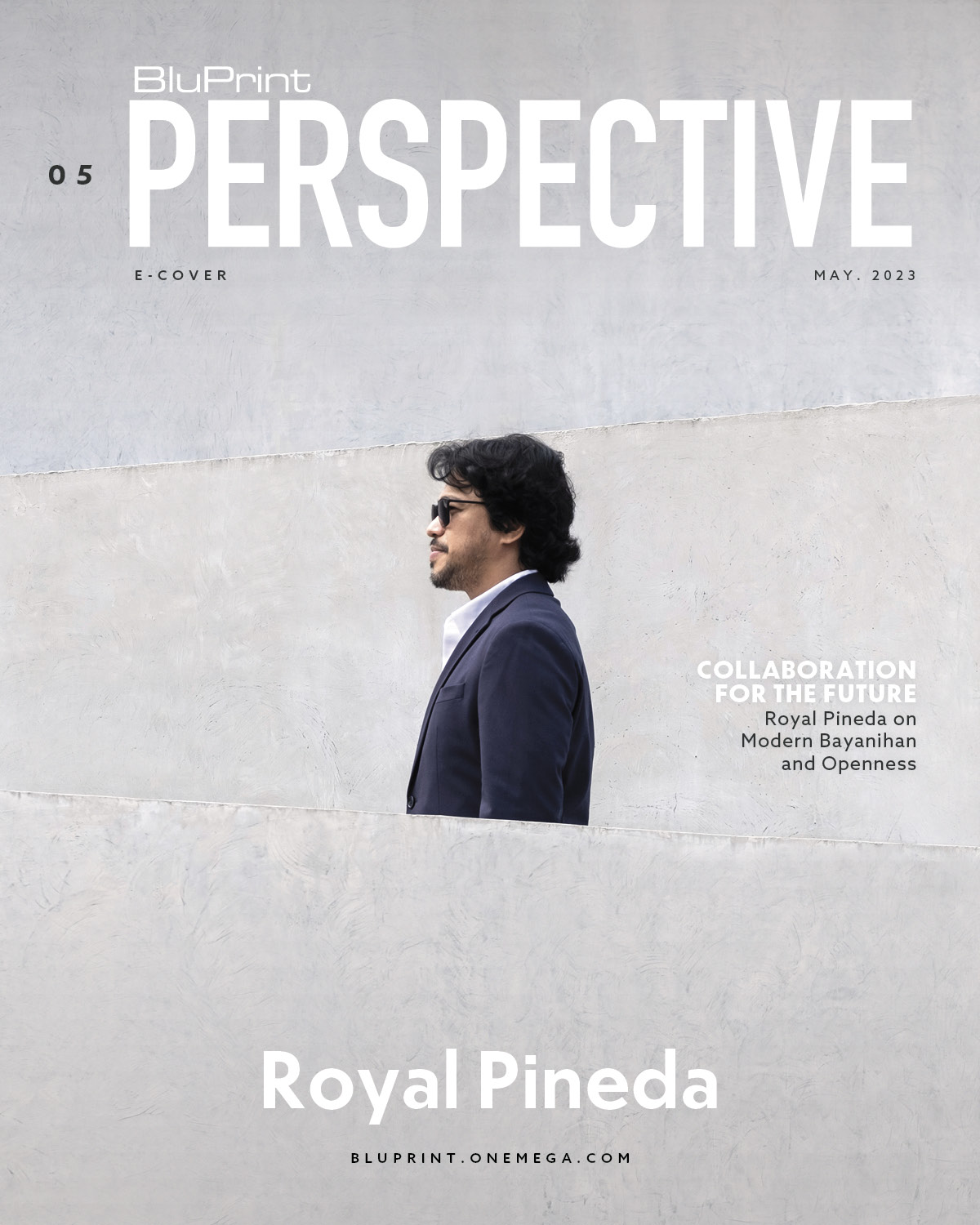
But just like in every other industry, there are those who stand as the voice of growth and optimism against people who still see local talent and materials as inferior or unworkable as compared to materials from abroad. Architect Royal Pineda of Royal Pineda+ Architecture•Design for one, has been a long-time advocate of the modern Philippine sensibilities in architecture.
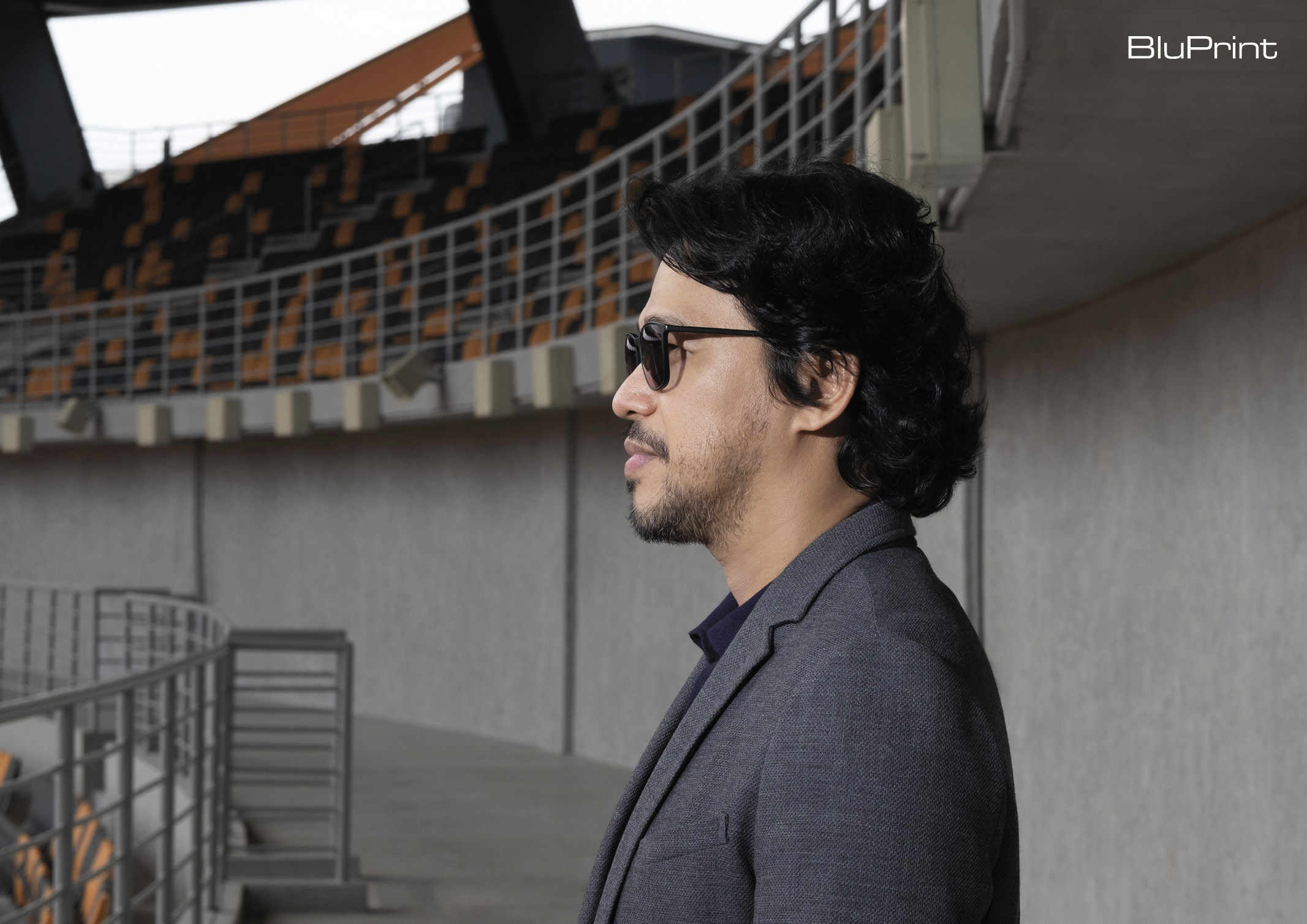
“I strongly say that we thought it was inferior.” says architect Pineda, “And I don’t agree with that. That’s why I’m trying to seek and push the effort of defining Modern Filipino architecture and design.”
Architect Pineda has always been bothered by the fact that Philippine architecture has been seen as something so inferior that even some locals would call it ‘baduy’. This type of thinking, which he believes to be the influence of a strong colonial mentality, ends up becoming the crutch supporting the idea of Philippine architecture being a temporary thing that wouldn’t survive the modern age because of the seemingly fragile materials used for traditional spaces combined with the thought that Filipino architecture lacks its own identity without being dominated by bahay-kubo-like features.
“I feel that those things–that strong colonial mentality–brings us to an idea that Philippine architecture will never last, that it will always be temporary because the foundation and the concept of it being related to a bahay kubo is made of wood. And then there came the bahay na bato which was an adaptation when the Spaniards came. They still put together the bahay kubo and they were still on stilts but they fortified the silong with stone–the bato, which is very European architecture. We were never used to doing that but in the end, the very concept of Philippine architecture–it’s temporary, it’s not to last.”
Architect Royal Pineda isn’t one who easily gets discouraged by the idea of working with local materials that some people deem to be inferior. The thought that current Philippine architecture lacks its own identity doesn’t come to his mind either. In fact, this kind of mentality has motivated him to create more spaces that are impactful not just aesthetic-wise but concept-wise too.
“I don’t need it to be a bahay kubo to say that it’s Filipino. It is Filipino when you see it, when you feel it, when you try to dissect it, it’s Filipino.”
The New Clark City Athletics Stadium and Aquatics Center are great examples of local architecture that reaches the expectations of what Modern Filipino architecture and design is in the eyes of Royal Pineda.
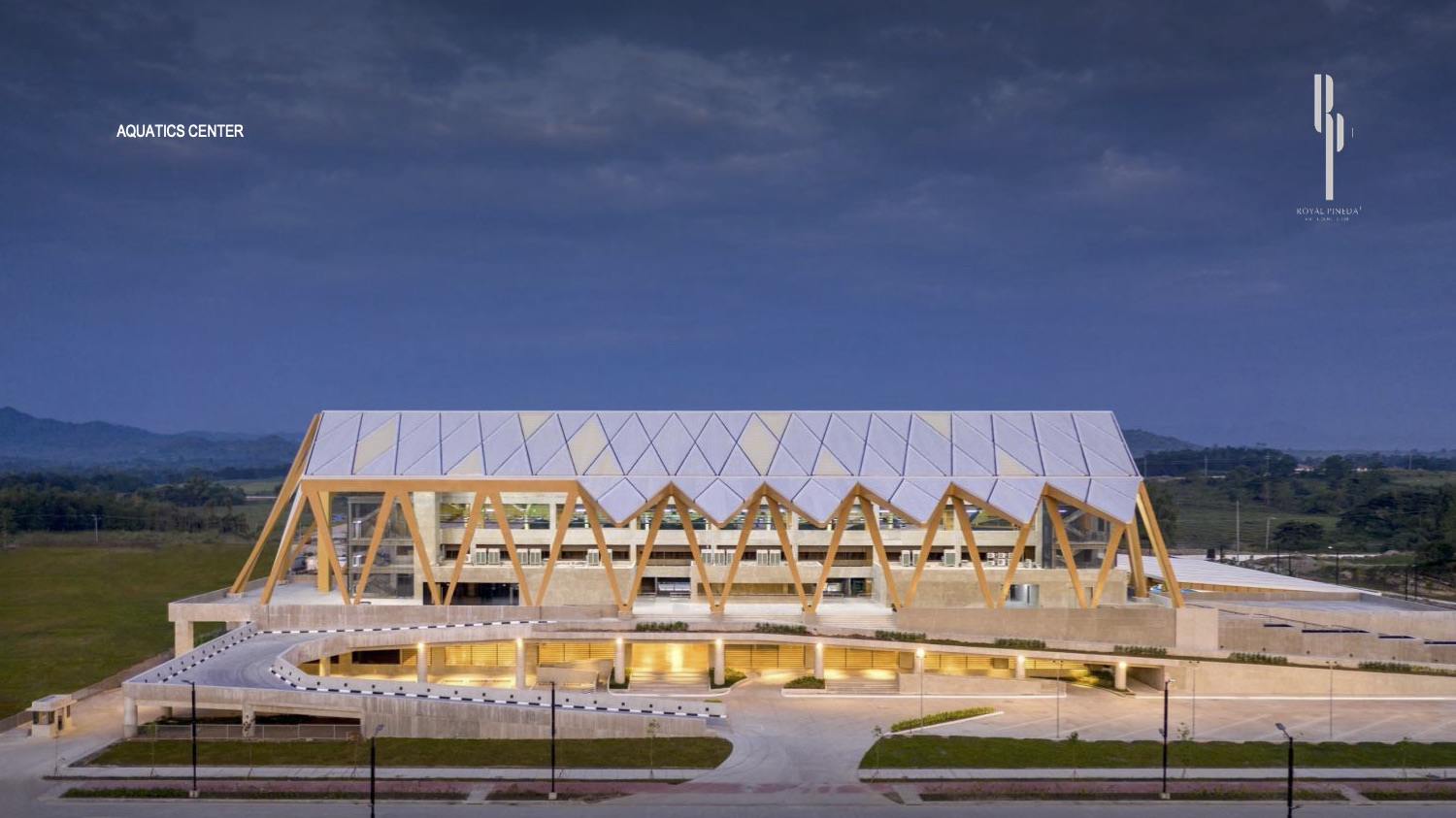

Related Read: Frameworks for Development: Creating investable cities through LIFE and Authenticity
“When we collaborated with BCDA, with the government on this project, we said “This cannot be just another smart or green city. This needs to be the Modern Filipino city. Which is the new face and the glimpse of the future of the Philippines.” and that’s why we were able to create a very comprehensive plan, at least in the first phase of this project. Everything we did, the materials, the lahar that we really just picked up from the rivers, it made the fiber of this new city. It became the element of this city and the identity of the modern Philippines of this area.”
Created to be the crowning glory for the smart and sustainable New Clark City’s new Sports Complex, the Athletics Stadium was made to seat 20,000 people during the 2019 Southeast Asian Games and was inspired by the nearby Mt. Pinatubo, highlighting new beginnings and unlocking new potential–a message that Pineda has long since been an advocate of. When Architect Pineda and the team were tapped by the Bases Conversion and Development Authority (BCDA) to create the stadium, the moment became one of the team’s most memorable moments where they were able to finally showcase what Royal Pineda+ Architecture•Design has been doing for almost 15 years–flaunting the Modern Filipino sensibility to everyone, including neighboring Southeast Asian countries.

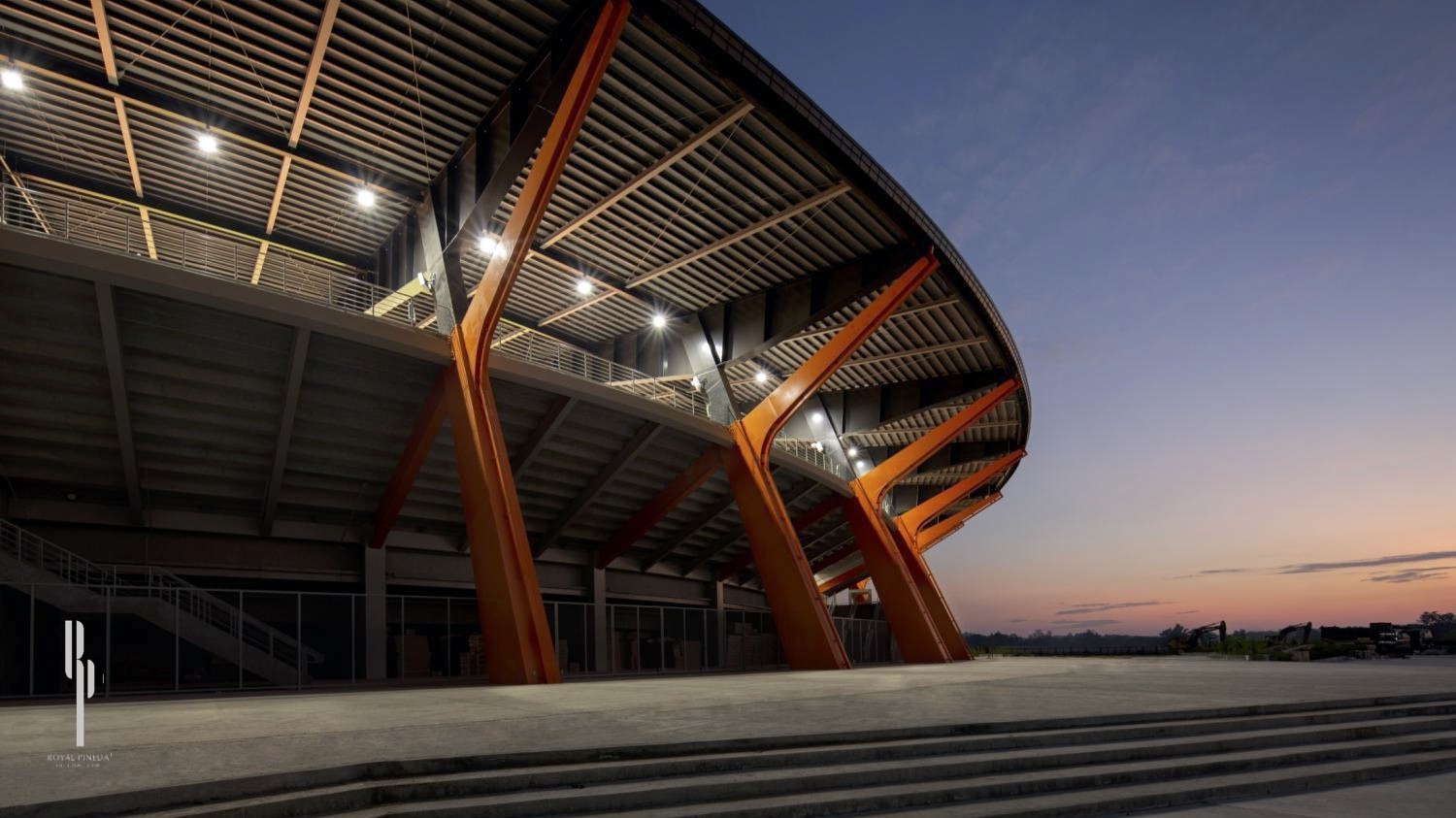
“We’ve been doing that, sharing with other neighboring countries.’ architect Pineda says, “But the platform to be able to showcase the Modern Filipino in a Southeast Asian event was a very beautiful opportunity because we were able to express our skill, our own interpretation of the Olympic standard facilities.”
Aside from carrying the message of rebirth and resiliency, the stadium’s design aesthetically echoes Mt. Pinatubo through its graphite caldera of a continuous roof, the energetic active orange and gray pixel-looking seating and playing field, and the use of lahar as another ingredient to its concrete mix and even its finishing. As the first IAAF-certified world-class facility in the country, the New Clark City Athletics Stadium can withstand 8.9 magnitude earthquakes and also works as an evacuation center. Meanwhile, the New Clark City Aquatics Center which can hold 2,000 spectators, is a space that dominantly highlights the concept of openness or on local terms, ‘maaliwalas’. During the conceptualizing process, Pineda and his team based the Aquatics’ concept on the Filipino characteristic of being open and pleasant towards everyone. With the sense that each local space shouldn’t be so closed in a tropical country, the Aquatics Center has a distinguishable triangulated roof that soars to a height of 27 meters and spans 56 meters and is made with interchanging uPVC and insulated sandwich panels that pull in as much natural light as possible without baking the venue and its spectators in the tropical heat.
“I think maaliwalas, in our efforts to constantly achieve what’s Filipino, has been our guiding principle. It’s always been that desire ‘is it already maaliwalas? Open, pleasant?’ and that’s what you feel now in the height, in the openness that you see.”
Prior to starting Royal Pineda+ Architecture•Design, Pineda worked for the late Philippine National Artist for Architecture Leandro Locsin who’s famous for crafting iconic structures that are modern but still carry climatic features fit for the Philippines’ humid and tropical climate. Like every other material, local materials also have their own strengths. Bamboo’s strength and flexibility offer superior earthquake resistance, coconut timber has the same, if not, better quality than hardwood but is comparably cheaper. Nipa and cogon are great insulators for island homes, and lahar works as a great barrier against termites. For architect Royal Pineda, combining these local elements with elements from foreign pieces and having the capacity to pull them all together to make something new but still reminiscent of what’s traditional already holds the principle of building Filipino architecture.
“We Filipinos can start creating, not just new architecture of what’s Modern Filipino architecture and design. We can create a new culture, we can create our new behaviors, our better versions of who we are as people and who we are as architects and designers. We don’t need to be limited by the past. Don’t get me wrong. I respect the past. But what I’m saying is, if I see that the past isn’t working anymore and in fact, is not bettering me as a person, as a human being, or even as a nation, why will I keep it? I will respect it, and look at it as my history but I will not bring it to my future. Why? Because I believe that there’s a better way of living. That’s my dream for every Filipino. To experience better architecture, and better design in everything that they do. There’s always a better way and I hope we can all be creative in doing that.”
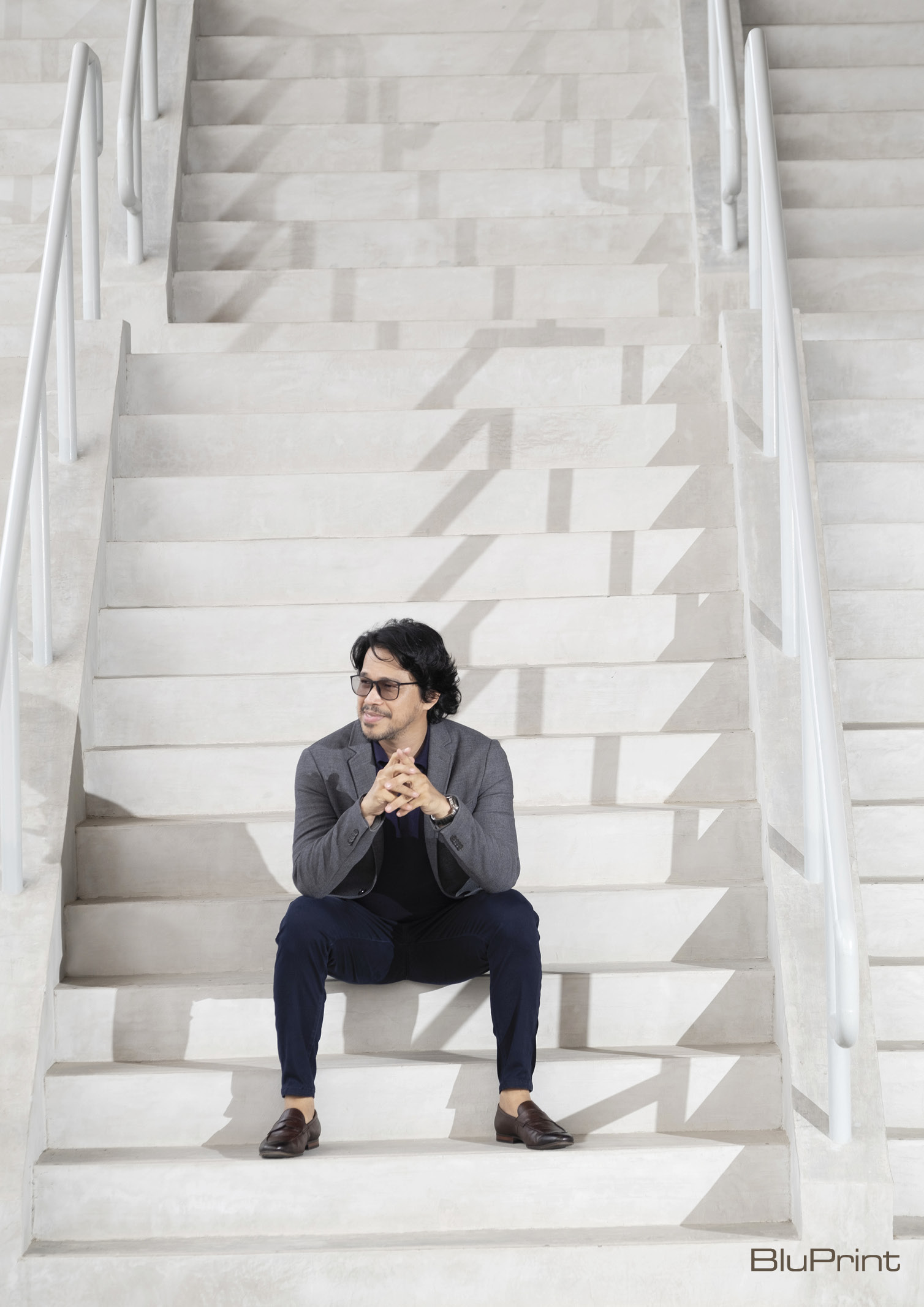
Royal Pineda+ Architecture•Design is a team of big dreamers and will continue being so in the mission to inspire and find other creatives like them. Currently, the team is chasing down three major goals. The first, to amplify each city’s micro identity in order to encourage more tourism from both international and local visitors.
“Imagine if every place had a distinct identity of its community. Imagine the domestic tourism. I would want to see Laoag being Laoag, Bicol being Bicol, Bohol being Bohol. And I would love to go to all these places because there’s a specific micro identity. And we’re doing that now with our projects.”
The second and third goals meanwhile involve pursuing the definition of Modern Filipino island living and Modern Filipino highland living.
“We want every Filipino to see that you can live in the farmland, in the mountains, you can live as a fisherman but you can live in luxury by design.” architect Pineda says, “Design will equalize and give us equality. Our country will be better with Practical Luxury and this doesn’t need to be expensive. There’s no excuse. We can’t keep telling ourselves, ‘No, we’re not a first-world country that’s why we need to live in poverty or we need to live this way, compromise ourselves, and only live to a certain standard.’ No. Design our ways. Design our lifestyle. Then we can all live in luxury by design.”
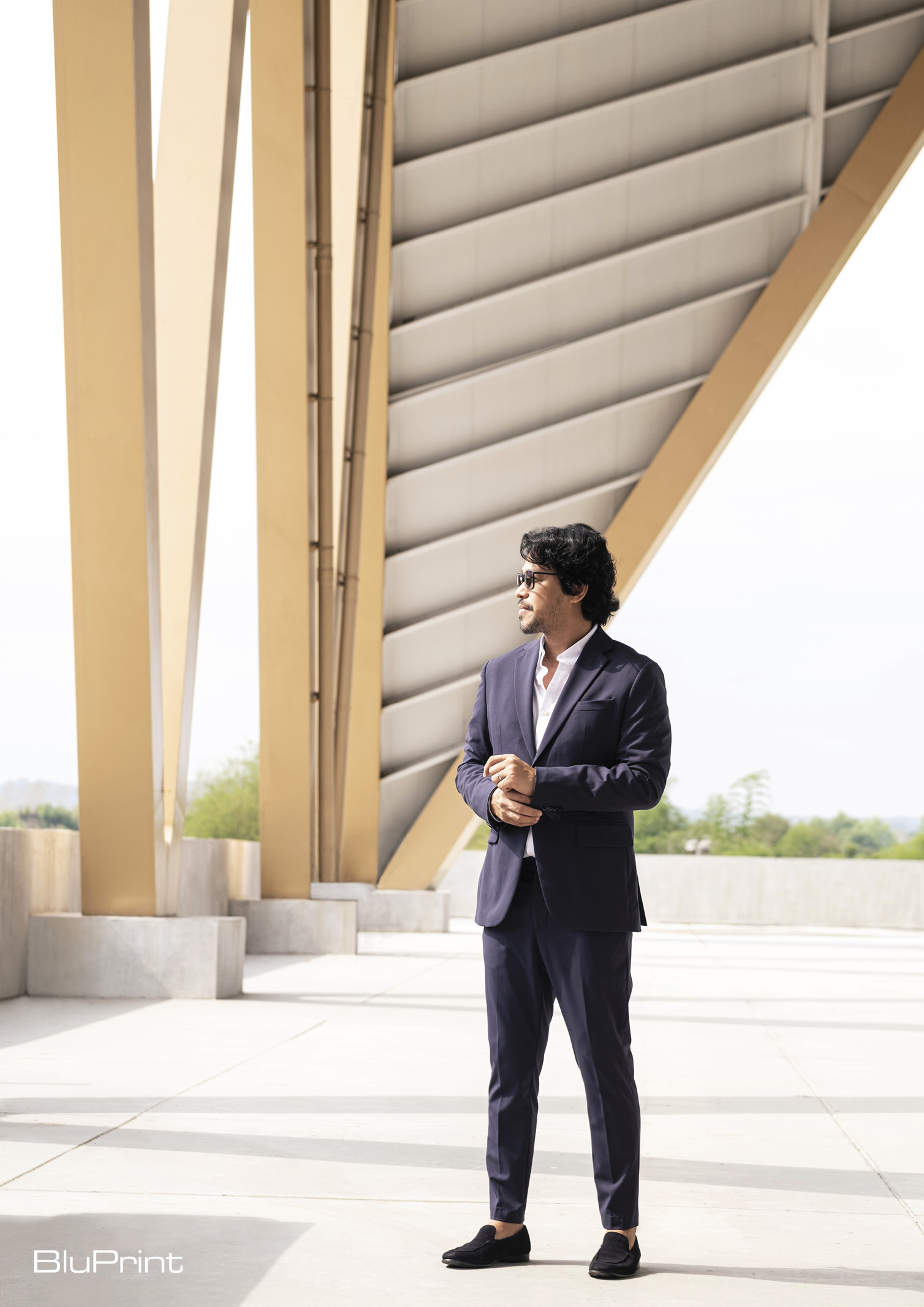
In Royal Pineda’s eyes, the Philippines is a treasure trove of talent, materials, and ideas that, when put together, can turn into something as grand and impressive as the foreign items or buildings that some locals practically worship. The creation of this grand, brand-new piece of art however can only be possible if the country opens itself to collaboration with other great minds while opening itself to the possibility of failure as well. The mere fact that there are Philippine talents who are able to absorb influences and transform them into something of their own should be known as the underrated skill of a monster–a skill that Royal Pineda and his team possess.
“We are dreaming of something and we know we cannot achieve it alone. It’s a dream we’d like to share with not just architects but with every creative person, not just architects. Let’s do Modern Bayanihan. Let’s all collaborate. Let us all live better in a Modern Philippines. Royal Pineda+ is a plus because we’re open and waiting for somebody to collaborate with.”
CREDITS
Text SHAN ARCEGA
Photography ED SIMON
Videography JOSE RAMIREZ
Art Direction DIANNE FERNANDO
Sittings Editor GEEWEL FUSTER
Shoot Coordination MAE TALAID and MJ ALMERO


